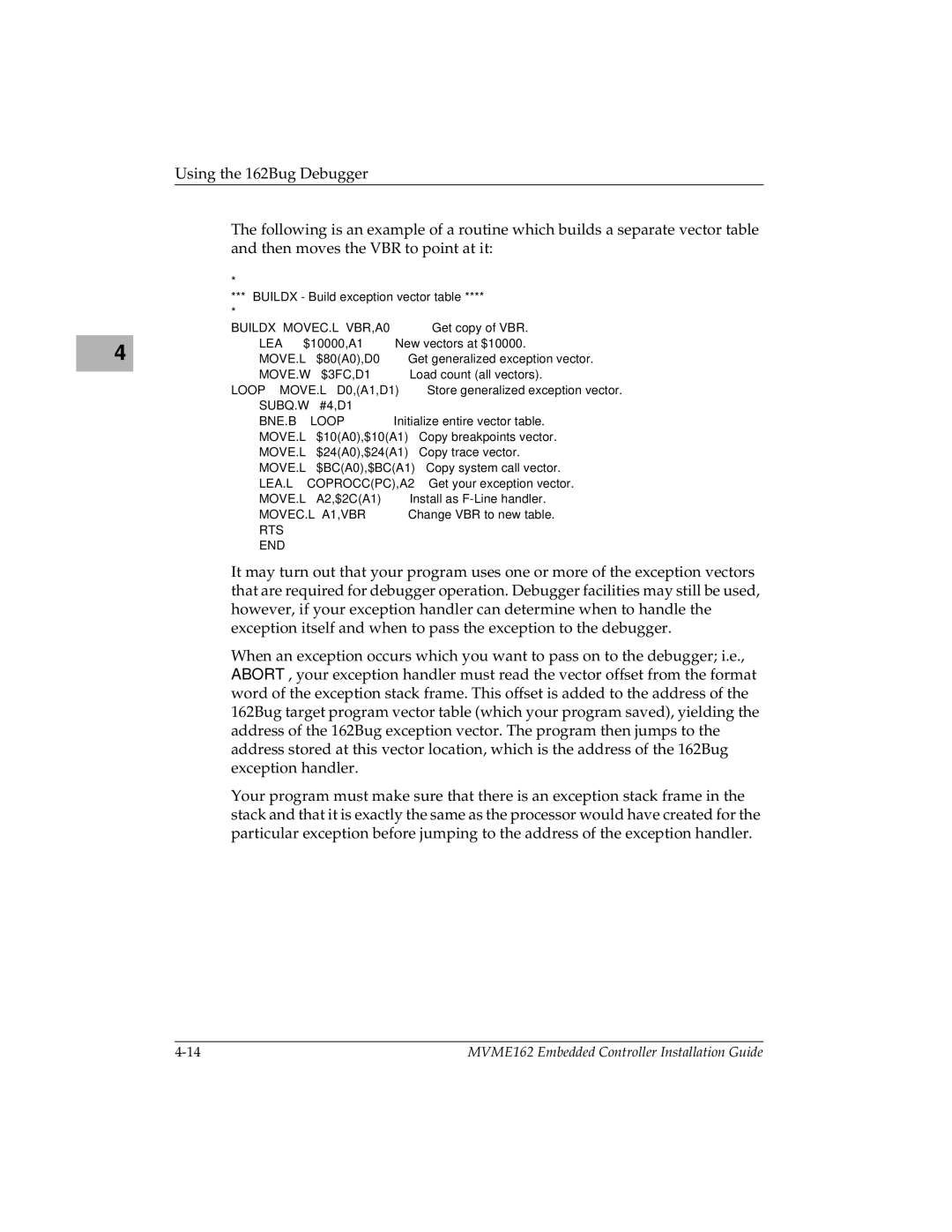
Using the 162Bug Debugger
The following is an example of a routine which builds a separate vector table and then moves the VBR to point at it:
*
***BUILDX - Build exception vector table ****
| BUILDX | MOVEC.L | VBR,A0 | Get copy of VBR. |
4 |
| LEA | $10000,A1 | New vectors at $10000. |
| MOVE.L | $80(A0),D0 | Get generalized exception vector. | |
|
| MOVE.W | $3FC,D1 | Load count (all vectors). |
|
| |||
| LOOP | MOVE.L | D0,(A1,D1) | Store generalized exception vector. |
|
| SUBQ.W | #4,D1 |
|
|
| BNE.B | LOOP | Initialize entire vector table. |
|
| MOVE.L | $10(A0),$10(A1) | Copy breakpoints vector. |
|
| MOVE.L | $24(A0),$24(A1) | Copy trace vector. |
|
| MOVE.L | $BC(A0),$BC(A1) | Copy system call vector. |
|
| LEA.L | COPROCC(PC),A2 | Get your exception vector. |
|
| MOVE.L | A2,$2C(A1) | Install as |
|
| MOVEC.L | A1,VBR | Change VBR to new table. |
|
| RTS |
|
|
|
| END |
|
|
It may turn out that your program uses one or more of the exception vectors that are required for debugger operation. Debugger facilities may still be used, however, if your exception handler can determine when to handle the exception itself and when to pass the exception to the debugger.
When an exception occurs which you want to pass on to the debugger; i.e., ABORT, your exception handler must read the vector offset from the format word of the exception stack frame. This offset is added to the address of the 162Bug target program vector table (which your program saved), yielding the address of the 162Bug exception vector. The program then jumps to the address stored at this vector location, which is the address of the 162Bug exception handler.
Your program must make sure that there is an exception stack frame in the stack and that it is exactly the same as the processor would have created for the particular exception before jumping to the address of the exception handler.
MVME162 Embedded Controller Installation Guide |
